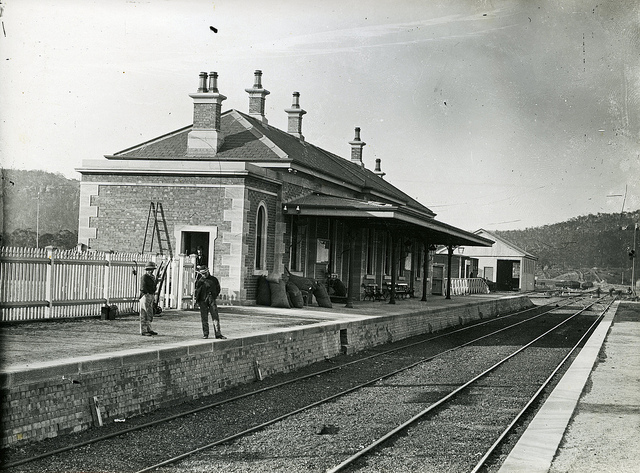In the first decade after Federation in 1901, the Australian Parliament passed legislation that determined the main features of our economic and social policies for many decades. This article examines two areas, protection of manufacturing industries through tariffs and the conciliation and arbitration of industrial disputes; these were known popularly as ‘tariff protection’ and ‘wage protection’. My research shows that there were close links between tariff protection and wage protection. These two areas are part of the set of foundation policies, which Paul Kelly has called ‘the Australian Settlement’.
Both of these policies were hotly debated in the first Commonwealth Parliaments. Tariff rates were fixed in a series of Acts, the most important being the Customs Tariff Act 1908. This Act set Australia on a path of high protection of manufacturing industries, which lasted until the reforms of the 1980s. The Commonwealth Conciliation and Arbitration Act 1904 set up our system of wage protection. It provided for compulsory arbitration of labour disputes and the fixing of wage rates and working conditions in the new Commonwealth by means of awards. It also set up the institution managing the regulation of labour markets, the Court of Conciliation and Arbitration. This Act led to a highly centralised system of wage-fixing whose main features persisted in Australia until the 1980s.
In the early years of the Commonwealth, the main link between these two areas of policymaking was the New Protection Policy of 1906. This policy was introduced to the Commonwealth Parliament by Alfred Deakin, then leader of the Protectionist Party and Prime Minister. The link took the form of measures to try to ensure that producers who received protection paid fair and reasonable wages to their workers. To enforce the link, Parliament first attempted to suspend tariff rates for those manufacturers who did not pay wages deemed to be fair and reasonable, and then it substituted a special excise duty to be paid by employers in these circumstances.
In the path-breaking Harvester Case, the then President of the Court of Conciliation and Arbitration, Mr Justice Higgins, fixed the fair and reasonable wage rates for the workers under determination in the excise duty cases by introducing the principle of a ‘living wage’. The living wage was the wage set at a level to support the normal needs of an unskilled male labourer with a family of five. This principle was new and seminal. It failed to gain acceptance when the High Court ruled the enabling Excise Act was unconstitutional. However, in all later disputes that came before the Court and which did not involve an application for an excise duty, Justice Higgins applied the same principle of a living wage (later renamed by him the ‘basic wage’).
Thus, the living wage/basic wage became enshrined as the main determinant of wage cases that came before the Court. From 1913, Justice Higgins indexed the basic wage to the cost of living. This step initiated the unique Australian wage-setting system with a central Australia-wide basic wage, adjusted for the cost of living with margins for skills, all determined by a Court.
The general policy of wage protection and tariff protection was accepted by both the Labour Party and newly-formed Liberal Party by 1910, and these basic principles and methods of fixing tariff rates and wage rates had been settled by the end of the first two decades after Federation. Further, the debates in Parliament on tariff protection and wage protection had a large effect on the formation of the two major political parties in Australia, the Labor Party and the Liberal Party, in the first decade of the Commonwealth.
Academic economists in Australia too accepted tariff protection until well after World War II and, along with industrial relations specialists, have generally been much more accepting of centralised wage fixing and have remained so up to the present time.
After the first two formative decades, a further link between wage fixing and tariff fixing emerged. Tariff rates recommended by the Tariff Board, an independent statutory authority set up in 1921 to advise the Government on tariff rates, on the one hand, and awards made by the Commonwealth Conciliation and Arbitration Court, on the other, often followed and influenced each other.
Essential features of this regulation of product and labour markets can be traced back to regulation in the late colonies. In particular, early Commonwealth tariff rates restored tariff levels to those that prevailed in 1890 Customs Act of the colony of Victoria, which was known as the ‘protectionist’ colony. Similarly, the forms of arbitration of industrial disputes in the 1904 Act follow precedents in the labour market legislation of the colonies of South Australia, New South Wales and Western Australia. As in the Commonwealth period, there were links between the two areas of policymaking in the popular and parliamentary debates about labour market regulation and tariff fixing in the late colonial period (though not in this period in the legislation).
The possibility of links between the arbitral fixing of wage rates and the legislative fixing of tariff rates arises because the markets for labour and for goods are directly interrelated. The demand for labour is derived from the demand for the goods it produces. In the trade-exposed industries, this gives unions, as agents of the workers, an incentive to press politically for higher levels of tariff protection. Conversely, in the event of an exogenous increase in the wage rates they must pay, such as that resulting from the imposition of minimum wage rates above current market rates, employers in the sheltered industries have an incentive to recoup lost profits by seeking an increase in tariff rates for the products they produce. In this manner, unions and their employers in the manufacturing sector, and a coalition of the Labor Party and the Protectionist Party/Liberal Party in Parliament, combined to protect wages and to protect manufacturing output in sheltered industries from foreign competition.
These political and regulatory links produced institutions and regulatory methods that were unique to Australia, and they made the goods and labour markets in the Australian economy among the most highly regulated markets in the non-communist world for many decades.
This blog post is summarized from Lloyd, P 2017, ‘The evolution of tariff protection and wage protection in the late colonies and early Federation’, Economic Papers, vol. 36, no. 4, pp. 459-476.





Recent Comments